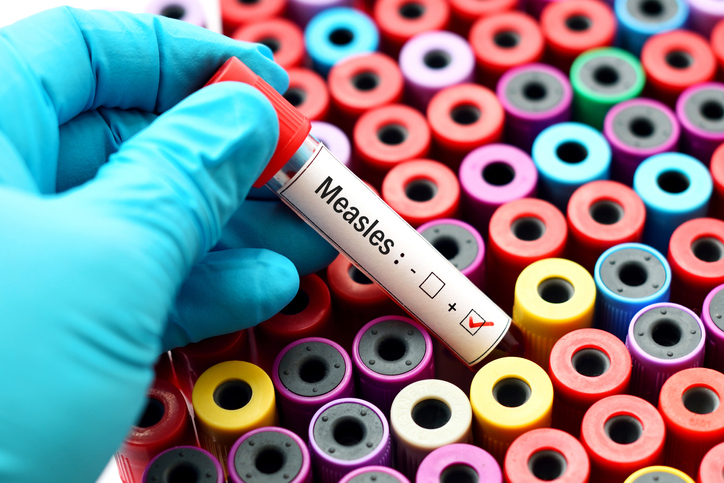2019: The Year of Vaccine-Preventable Diseases
Infectious diseases such as mumps, measles and chickenpox made a comeback in the U.S. this year, even though they're largely preventable through use of vaccines.
In addition to posing a health risk, these highly contagious diseases create a huge burden for the healthcare system, experts say. To keep a disease such as measles from spreading, public health organizations and healthcare providers have to track down anyone who may have come into contact with a measles patient before they even showed any symptoms.
The Cedars-Sinai Newsroom asked Jonathan Grein, MD, Cedars-Sinai's medical director of Hospital Epidemiology, why these diseases have returned and what the public can do about it.
Why are we seeing outbreaks of these vaccine-preventable diseases? Unfortunately, not enough people are getting vaccinated, which leaves us vulnerable to these infections returning. With a disease like measles, a single case can lead to an explosive outbreak because it's so infectious.
Are these serious diseases? They can be, especially in people who have underlying medical conditions or people who are very young or old. While many people recover from these illnesses, some will develop complications that can be severe or life-threatening.

The most important thing to do is to get vaccinated if you're able to do so. It's by far the most effective option.
What are the first signs of these illnesses? Early symptoms can be very general and flu-like: fevers, muscle aches, headaches or a cough. It can be very difficult to know what you have early on, which makes it easy to spread these highly contagious diseases. Measles and chickenpox have a classic rash associated with them, but the rash may not be present initially.
How do these diseases spread? Measles is probably the most infectious disease that we know of. It spreads very easily through the air and can linger in a room after an infected person is gone. Chickenpox also can be spread through the air. Mumps is spread through respiratory droplets produced by coughing, similar to how the flu is spread.
What should people do if they develop symptoms? Common-sense measures go a long way in reducing the risk of spreading these illnesses to others. If you develop symptoms, avoid being around others, wash your hands frequently and cough into your shoulder rather than your hands. If you decide to seek medical care—which isn't always necessary—call ahead to tell your doctor about your symptoms. If you go to a clinic, put on a mask to avoid exposing others.
How can people avoid getting these diseases? The most important thing to do is to get vaccinated if you're able to do so. It's by far the most effective option. Other common-sense measures include frequent hand-washing and avoiding people who are sick, which is challenging because people can be infectious before they exhibit any symptoms.
Read more on the Cedars-Sinai blog: Mumps—What You Need to Know





